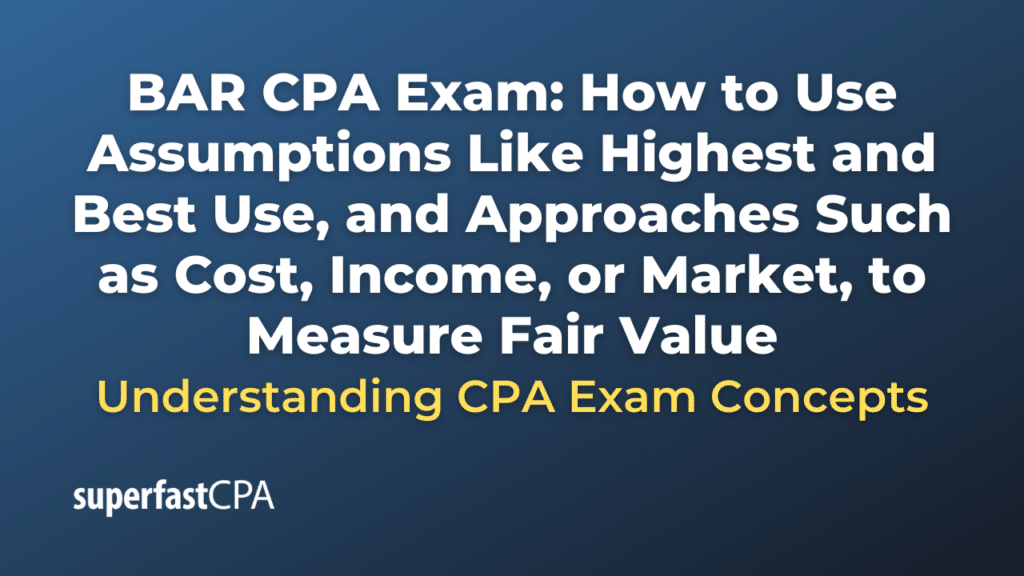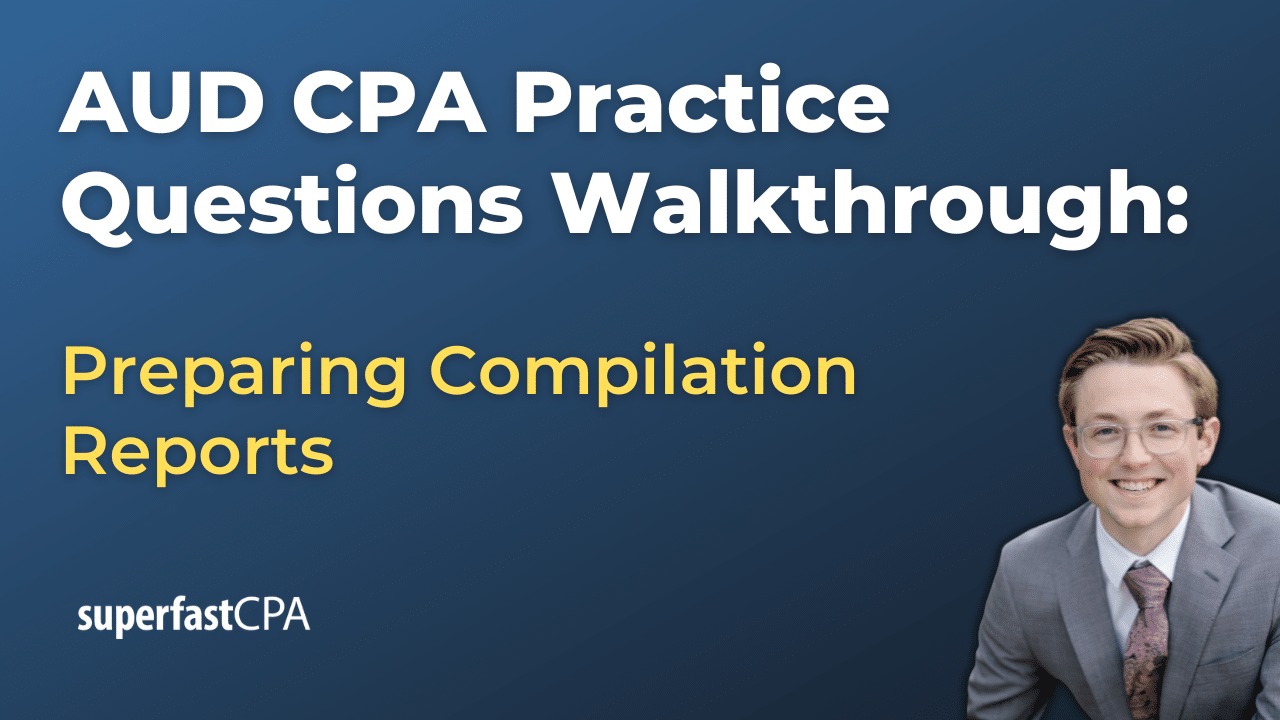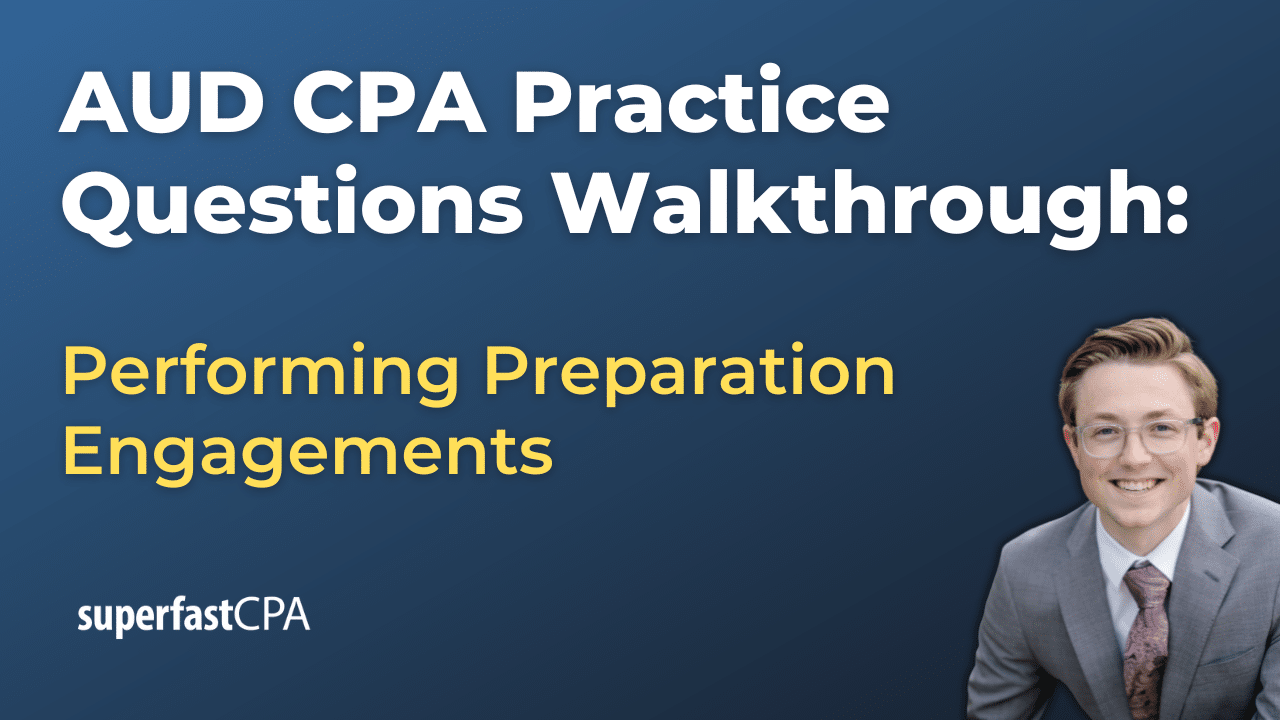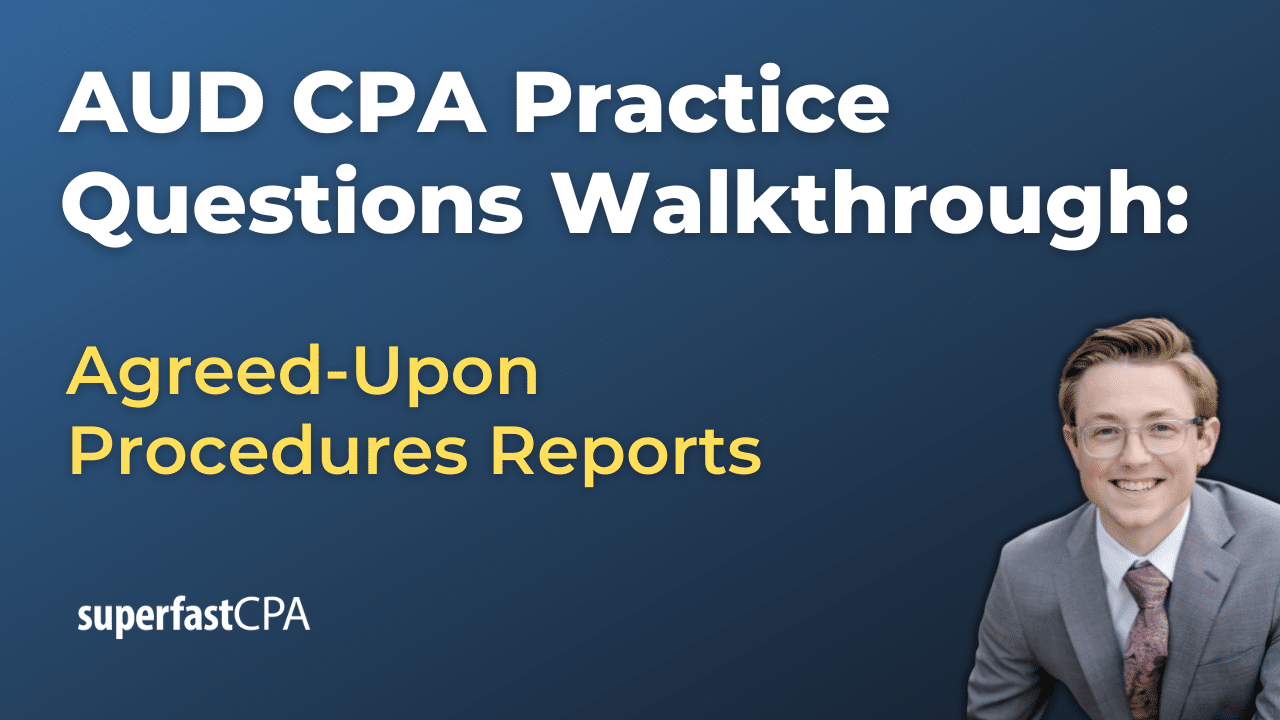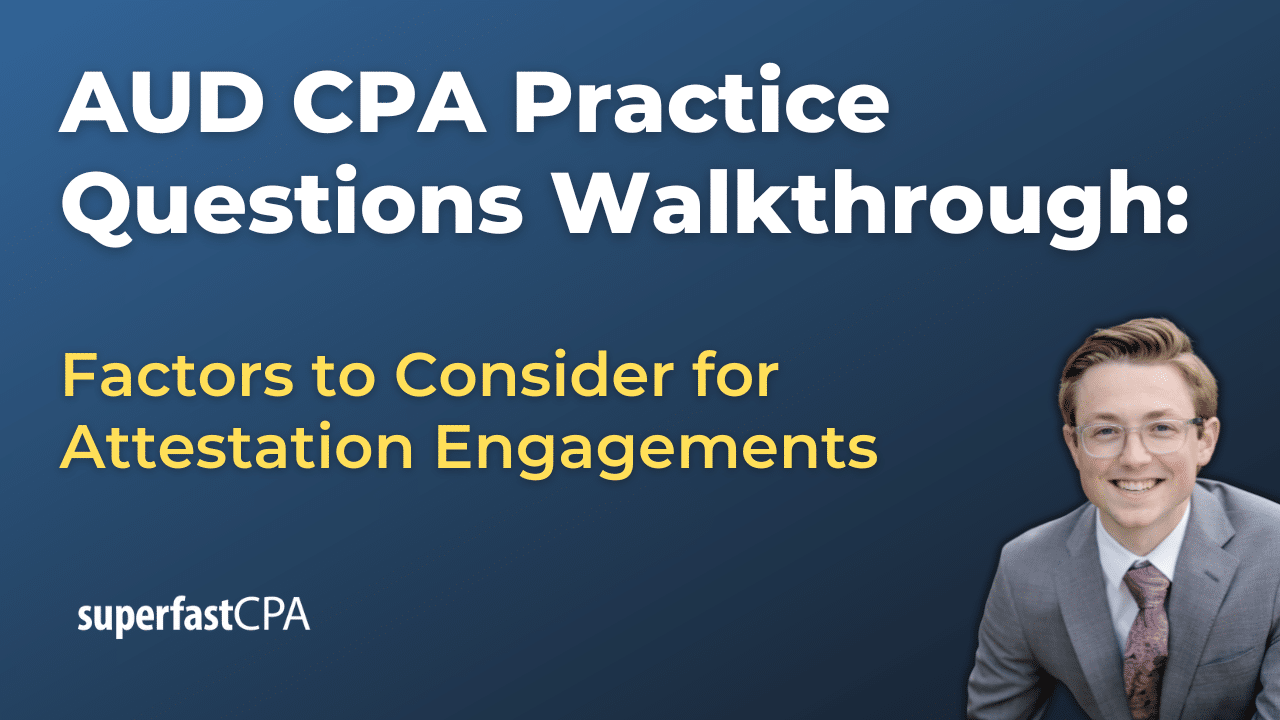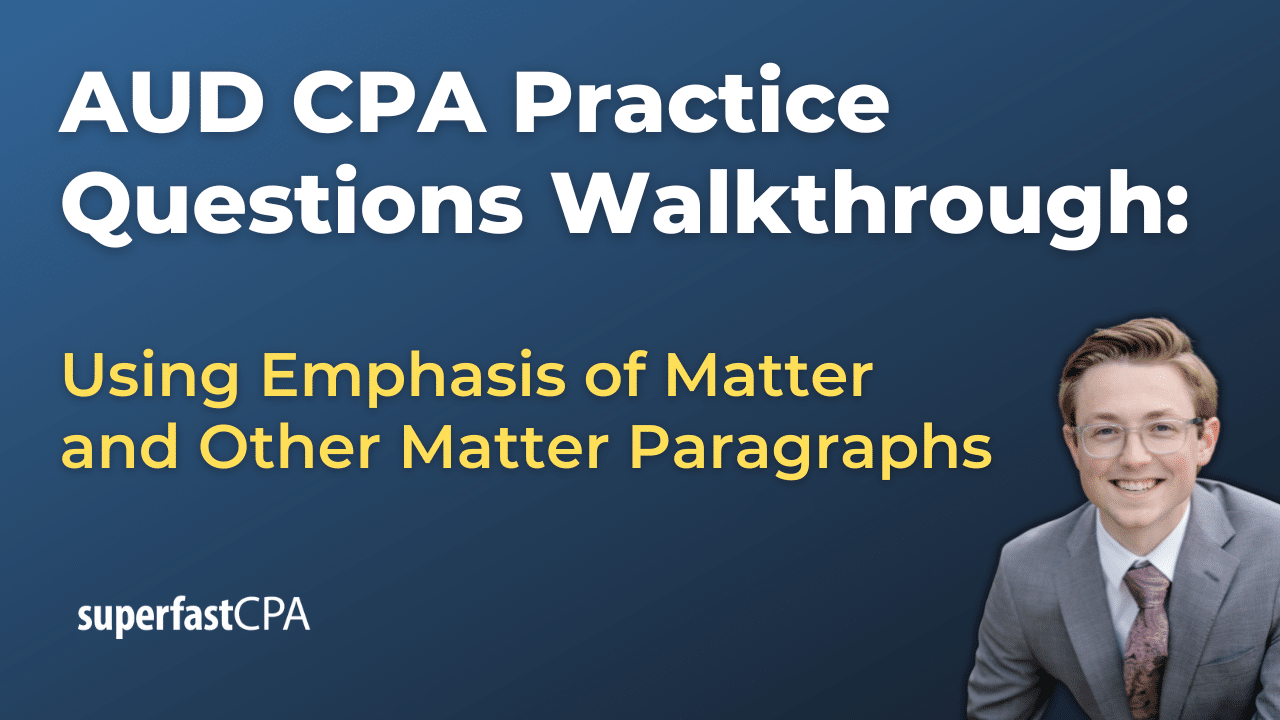Introduction
Overview of Fair Value Measurement
Definition of Fair Value
In this article, we’ll cover how to use assumptions like highest and best use, and approaches such as cost, income, or market, to measure fair value. Fair value is a critical concept in financial reporting, representing the estimated price at which an asset could be sold or a liability transferred between knowledgeable and willing parties in an arm’s length transaction. According to accounting standards like IFRS 13 and ASC 820, fair value is defined as “the price that would be received to sell an asset or paid to transfer a liability in an orderly transaction between market participants at the measurement date.” This definition emphasizes the importance of using market-based measurements rather than entity-specific values, ensuring that the fair value reflects conditions in the open market.
Importance of Fair Value in Financial Reporting
Fair value plays a vital role in financial reporting by providing users of financial statements with relevant and reliable information about the current value of assets and liabilities. Accurate fair value measurements enable stakeholders to make informed decisions based on the most up-to-date financial information. This is particularly important in markets where prices fluctuate, as it ensures that the financial statements reflect the true economic reality of an entity’s financial position.
Fair value is also essential in areas such as impairment testing, business combinations, and investment valuations, where it serves as the basis for determining gains, losses, and the overall financial health of an entity. The consistent application of fair value measurement enhances transparency and comparability across different entities, contributing to the overall integrity of financial reporting.
Purpose of the Article
Focus on Using Assumptions and Approaches to Measure Fair Value
The process of measuring fair value involves making several critical assumptions and selecting appropriate valuation approaches. Assumptions such as the highest and best use of an asset and the application of various valuation approaches—cost, income, or market—are fundamental in determining accurate fair values. This article aims to delve into these assumptions and approaches, providing a comprehensive understanding of how they are applied in practice to measure fair value.
By exploring the nuances of these assumptions and approaches, this article seeks to equip readers with the knowledge needed to apply these concepts effectively in real-world scenarios. Understanding these elements is not only crucial for accurate financial reporting but also forms a significant part of the BAR CPA exam, where candidates are tested on their ability to measure and report fair value accurately.
Relevance to BAR CPA Exam
The BAR CPA exam places significant emphasis on fair value measurement, as it is a critical component of financial reporting and accounting standards. Candidates are expected to understand how to use assumptions like the highest and best use, and how to apply different valuation approaches in various contexts. Mastery of these concepts is essential for success on the exam and in professional practice, where fair value measurement is often a complex and challenging task.
This article is tailored to help BAR CPA exam candidates grasp these key concepts, providing them with the insights and practical knowledge needed to tackle fair value-related questions confidently. By breaking down the assumptions and approaches used in fair value measurement, this article serves as a valuable resource for those preparing for the BAR CPA exam, ensuring they are well-equipped to meet the exam’s demands.
Understanding Fair Value Measurement
Definition and Concept
Explanation of Fair Value According to Relevant Accounting Standards
Fair value is a fundamental concept in financial reporting, defined by authoritative accounting standards such as IFRS 13 and ASC 820. According to these standards, fair value represents “the price that would be received to sell an asset or paid to transfer a liability in an orderly transaction between market participants at the measurement date.” This definition emphasizes several key elements:
- Orderly Transaction: The transaction is assumed to occur under normal market conditions, without any compulsion to buy or sell, ensuring that the price reflects a true market value.
- Market Participants: Fair value is determined from the perspective of market participants, who are independent, knowledgeable, and willing to engage in the transaction. This ensures that the valuation reflects an unbiased market-based view.
- Measurement Date: The fair value is specific to a particular date, reflecting the market conditions at that time. This date is critical as market conditions can change rapidly, affecting the value of assets and liabilities.
These standards guide the application of fair value across various contexts, ensuring consistency and comparability in financial reporting. They require that entities use market-based measurements rather than internal valuations, thereby aligning financial statements with external market realities.
Role of Assumptions in Fair Value Measurement
Importance of Assumptions in Estimating Fair Value
Assumptions play a crucial role in the estimation of fair value, particularly when market data is not directly observable. These assumptions influence the inputs used in valuation models, which in turn affect the estimated fair value. The accuracy and reliability of fair value measurements depend heavily on the appropriateness of the assumptions made during the valuation process.
Assumptions are necessary because, in many cases, direct market prices are unavailable, requiring the use of valuation techniques that involve subjective judgments. For example, when determining the fair value of real estate, an appraiser might assume the highest and best use of the property, which could significantly impact the valuation outcome. Similarly, in valuing financial instruments, assumptions about future cash flows, discount rates, and market conditions are essential to derive a fair value.
Overview of Common Assumptions Used in Fair Value Measurement
Several key assumptions are commonly used in fair value measurement:
- Highest and Best Use: This assumption pertains to the optimal use of an asset that would maximize its value. For example, land might be more valuable if developed for commercial use rather than residential. The highest and best use assumption is fundamental in real estate valuations and can significantly affect the fair value outcome.
- Market Conditions: Assumptions about the current and future state of the market, including interest rates, inflation, and economic trends, are crucial in valuing assets like securities or real estate. These assumptions influence the discount rates and expected returns used in valuation models.
- Entity-Specific Factors: While fair value is a market-based measure, certain entity-specific factors, such as the entity’s credit risk in liability valuations, can also play a role. Assumptions about these factors are necessary when market participants would consider them in pricing the asset or liability.
- Discount Rates: In the income approach to valuation, the discount rate is a critical assumption. It reflects the time value of money and the risk associated with the asset’s future cash flows. Selecting an appropriate discount rate is essential for accurate fair value measurement.
- Expected Cash Flows: For assets like bonds or other financial instruments, assumptions about future cash flows are fundamental. These assumptions involve judgments about the likelihood and timing of payments, which directly impact the estimated fair value.
These assumptions must be carefully considered and justified in the fair value measurement process. The selection of assumptions should be based on the best available information and aligned with how market participants would view the asset or liability. Misestimating or incorrectly applying these assumptions can lead to significant misstatements in financial reports, underscoring the importance of a thorough and thoughtful valuation process.
Key Assumption: Highest and Best Use
Definition of Highest and Best Use
Explanation of the Concept
The concept of “Highest and Best Use” (HBU) refers to the most profitable, legally permissible, physically possible, and financially feasible use of an asset that would result in its highest value. This assumption is pivotal in determining the fair value of certain assets, particularly in real estate, where the potential for development or alternative uses can significantly influence the asset’s value.
The highest and best use of an asset is determined by considering the following criteria:
- Legally Permissible: The use must comply with zoning laws, land use regulations, and any other legal constraints.
- Physically Possible: The use must be physically possible given the asset’s size, shape, topography, and other physical characteristics.
- Financially Feasible: The use must generate a return that exceeds the cost of development or conversion, making it financially viable.
- Maximally Productive: Among the legally permissible, physically possible, and financially feasible uses, the one that produces the highest value is considered the highest and best use.
This assumption is not static; it evolves with changes in market conditions, legal regulations, and the physical environment of the asset.
Importance in Fair Value Measurement
The highest and best use assumption is crucial in fair value measurement because it reflects the perspective of market participants who would seek to maximize the value of the asset. This assumption ensures that the fair value reflects the asset’s true economic potential rather than its current use, which might not be the most valuable option.
Incorporating the highest and best use assumption into fair value measurement ensures that the valuation aligns with how knowledgeable and willing market participants would assess the asset. This is especially important in real estate, where the value of land, for instance, could differ significantly depending on whether it is developed for residential, commercial, or industrial purposes.
By considering the highest and best use, the fair value measurement becomes more robust, reflecting the asset’s potential under optimal conditions rather than its existing use, which may not fully exploit its value.
Application in Real Estate and Other Asset Classes
How Highest and Best Use Impacts the Valuation Process
In real estate, the highest and best use assumption can drastically alter the valuation outcome. For example, a piece of land currently used for agricultural purposes might be more valuable if repurposed for residential or commercial development. In such cases, the valuation under the highest and best use assumption would consider the potential for development rather than the land’s current agricultural use.
The impact of highest and best use is not limited to real estate. In other asset classes, such as machinery or equipment, this assumption could influence whether an asset is valued based on its current function or its potential use in a more profitable or efficient capacity. For instance, a manufacturing facility could be valued higher if its location and infrastructure make it suitable for conversion into a data center, reflecting a more lucrative use in the current market.
The valuation process typically involves:
- Analyzing Market Trends: Understanding current and projected market conditions that could influence the potential uses of the asset.
- Evaluating Legal and Regulatory Constraints: Assessing zoning laws, environmental regulations, and other legal factors that could limit or enable different uses.
- Considering Development Costs: Estimating the costs associated with converting the asset to its highest and best use, including demolition, construction, and regulatory compliance.
- Comparing Alternative Uses: Analyzing different scenarios to determine which use would generate the highest value.
Case Studies and Examples
Practical Examples Demonstrating the Application of Highest and Best Use
Example 1: Urban Land Development
Consider a plot of land in a rapidly growing urban area currently used for parking. While the current use generates steady income, the highest and best use might be to develop the land into a mixed-use commercial and residential building. The valuation under the highest and best use assumption would factor in the potential revenue from leasing or selling units in the new development, which could significantly increase the fair value compared to its current use.
Example 2: Industrial Facility Conversion
An old industrial facility located in a city with a booming tech sector may no longer be profitable in its current use. However, its location and infrastructure could make it an ideal candidate for conversion into a data center or technology hub. The fair value measurement, assuming the highest and best use, would consider the potential income from leasing the facility to tech companies, rather than its dwindling value as an industrial site.
Example 3: Agricultural Land Redevelopment
A large tract of agricultural land on the outskirts of a growing metropolitan area may be more valuable if developed into a residential suburb. The highest and best use assumption would guide the valuation towards this potential redevelopment, considering factors like demand for housing, proximity to city amenities, and the feasibility of rezoning and development. This assumption could lead to a fair value significantly higher than that based on its current agricultural use.
These examples highlight the importance of considering the highest and best use in fair value measurement, demonstrating how this assumption can reveal the true economic potential of an asset. By focusing on what the asset could become, rather than what it currently is, the valuation process aligns more closely with the perspectives of market participants, leading to a more accurate and relevant fair value.
Approaches to Measure Fair Value
Cost Approach
Explanation and Application
Definition of the Cost Approach
The cost approach is one of the primary methods used to measure fair value, particularly for assets that are not frequently traded or for which market data is limited. This approach estimates the fair value of an asset by determining the cost to replace it with a new asset of equivalent utility, adjusted for depreciation and obsolescence. Essentially, the cost approach answers the question: “What would it cost to reproduce or replace this asset today?”
The cost approach is grounded in the principle of substitution, which assumes that a rational buyer would not pay more for an asset than the cost to acquire a comparable one with the same utility. This method is often used for tangible assets such as real estate, machinery, and specialized equipment, where direct market comparisons may be difficult to find.
Situations Where the Cost Approach Is Most Applicable
The cost approach is particularly applicable in the following situations:
- Unique or Specialized Assets: When dealing with assets that are unique or have limited market activity, such as custom-built machinery or specialized industrial facilities, the cost approach provides a reliable estimate of fair value.
- New Construction: In the valuation of newly constructed buildings or infrastructure, the cost approach is often the most relevant, as it directly correlates with the current construction costs.
- Insurable Assets: The cost approach is frequently used for insurable assets to determine replacement costs for insurance purposes. This ensures that the insurance coverage reflects the cost to replace the asset if it were to be destroyed.
- Assets with No Active Market: For assets with no active secondary market, such as certain types of property, plant, and equipment, the cost approach offers an alternative valuation method that does not rely on market comparables.
Strengths and Weaknesses
Advantages of Using the Cost Approach
- Simplicity and Objectivity: The cost approach is relatively straightforward, relying on observable inputs like construction costs, labor, and materials, making it easier to apply in many situations.
- Relevance for New Assets: For newly constructed or acquired assets, the cost approach directly reflects the current market conditions, providing a fair and accurate value.
- Applicability to Unique Assets: The cost approach is particularly useful for assets that are unique or specialized, where market comparables are difficult or impossible to find.
- Useful in Insurance Valuations: It is highly effective for determining the replacement cost for insurance purposes, ensuring that assets are adequately insured against loss.
Limitations of Using the Cost Approach
- Depreciation and Obsolescence: The cost approach requires accurate estimates of depreciation and obsolescence, which can be subjective and difficult to quantify, especially for older assets.
- Ignores Market Conditions: Unlike the market approach, the cost approach does not consider current market demand and supply dynamics, which can result in a valuation that does not fully reflect the asset’s market value.
- Limited Application to Intangible Assets: The cost approach is less applicable to intangible assets, such as intellectual property, where replacement costs do not necessarily correlate with fair value.
- Potential Overvaluation: In some cases, the cost approach may overestimate the fair value, particularly if the asset has suffered significant functional or economic obsolescence.
Examples and Case Studies
Illustrative Examples of Cost Approach Application
Example 1: Valuation of a Custom-Built Manufacturing Facility
A company owns a custom-built manufacturing facility designed for a specific production process. Given the specialized nature of the facility, there are no comparable properties in the market. The cost approach is applied by estimating the current cost to construct a similar facility, including materials, labor, and design costs, then adjusting for physical depreciation and any functional obsolescence. This method provides a fair value that reflects the cost to replace the facility, which is particularly relevant in the absence of market comparables.
Example 2: Valuation of a Historic Building
A historic building in a city center is valued using the cost approach. Since the building has unique architectural features and significant cultural value, it is difficult to find comparable sales in the market. The valuation involves estimating the cost to reconstruct the building to its current state, including the use of similar materials and craftsmanship, while also accounting for the building’s age and any structural deterioration. This approach ensures that the fair value reflects the true cost to replace the building in its current condition.
Example 3: Insurance Valuation for Equipment
A manufacturing company needs to determine the replacement cost of its equipment for insurance purposes. The equipment is specialized and has no active secondary market. The cost approach is used to estimate the current cost to acquire and install new equipment with similar capabilities. This valuation ensures that the insurance coverage accurately reflects the cost to replace the equipment in the event of loss, providing financial protection for the company.
These examples illustrate how the cost approach can be effectively applied in various scenarios, particularly when dealing with specialized, unique, or newly constructed assets. By focusing on replacement costs and adjusting for depreciation and obsolescence, the cost approach offers a reliable method for estimating fair value, especially in situations where market data is limited or unavailable.
Income Approach
Explanation and Application
Definition of the Income Approach
The income approach is a valuation method used to determine the fair value of an asset based on the income it is expected to generate over its useful life. This approach is grounded in the principle that the value of an asset is directly related to the present value of the future cash flows it is expected to produce. The income approach is particularly applicable for assets that generate consistent income, such as rental properties, businesses, or financial instruments.
The core idea behind the income approach is that investors are willing to pay a price today that reflects the present value of the future economic benefits they expect to receive from the asset. This method is often used when there is a need to value assets where market comparables are not readily available, or when the asset’s value is heavily dependent on its ability to generate income.
Key Methods Within the Income Approach
- Discounted Cash Flow (DCF) Method:
- The DCF method is one of the most widely used techniques within the income approach. It involves estimating the future cash flows that the asset is expected to generate and then discounting those cash flows back to their present value using a discount rate that reflects the asset’s risk profile.
- The discount rate is typically derived from the asset’s cost of capital or the required rate of return for investors. The present value of the future cash flows provides an estimate of the asset’s fair value.
- The DCF method is highly flexible and can be applied to a wide range of assets, including businesses, real estate, and financial instruments.
- Capitalization of Earnings:
- This method involves estimating the value of an asset by capitalizing its expected earnings or cash flows at a capitalization rate, which reflects the risk and return profile of the asset.
- The capitalization rate is usually determined based on market data or investor expectations. The income approach using capitalization is often employed in valuing income-producing real estate or businesses with stable earnings.
- Residual Income Model:
- The residual income model calculates the fair value of an asset by taking into account the income generated above the required return on equity. It is particularly useful for valuing companies where traditional earnings methods may not fully capture the value created for shareholders.
When to Use the Income Approach
The income approach is most applicable in the following scenarios:
- Income-Producing Assets: When valuing assets that generate regular income, such as rental properties, bonds, or businesses with stable cash flows, the income approach provides a direct method to estimate value based on expected earnings.
- Lack of Market Comparables: In situations where market data is scarce or nonexistent, the income approach offers an alternative to the market approach by focusing on the asset’s intrinsic value derived from future income.
- Complex Financial Instruments: For complex financial instruments, such as derivatives or structured products, the income approach (especially the DCF method) is often used to value the asset based on the projected cash flows and associated risks.
- Valuation of Businesses: The income approach is a common method in business valuation, especially for companies where future cash flow projections are a key driver of value.
Strengths and Weaknesses
Pros of the Income Approach
- Focus on Economic Value: The income approach directly links the asset’s value to its ability to generate future income, providing a clear picture of its economic worth.
- Flexibility: The DCF method, in particular, can be adapted to various types of assets and scenarios, making it a versatile tool in valuation.
- Long-Term Perspective: By focusing on future cash flows, the income approach considers the long-term profitability and sustainability of the asset.
- Reflects Time Value of Money: The income approach inherently accounts for the time value of money, ensuring that future cash flows are appropriately discounted to reflect present value.
Cons of the Income Approach
- Dependence on Projections: The accuracy of the income approach is heavily dependent on the quality of the cash flow projections. Inaccurate or overly optimistic projections can lead to significant valuation errors.
- Complexity: The income approach, particularly the DCF method, can be complex and requires detailed financial analysis, making it more challenging to apply than other methods.
- Sensitivity to Discount Rate: The choice of discount rate is critical and can significantly affect the valuation outcome. Small changes in the discount rate can lead to large variations in the estimated fair value.
- Limited Applicability to Non-Income-Producing Assets: The income approach is less effective for assets that do not generate income, such as vacant land or certain types of personal property.
Examples and Case Studies
Practical Examples Showing the Use of the Income Approach
Example 1: Valuation of a Commercial Office Building
A commercial office building in a prime location generates consistent rental income from tenants. To determine the fair value of the building, the DCF method is applied. The future rental income is projected based on current lease agreements and expected market rent increases. These cash flows are then discounted back to the present value using a discount rate that reflects the building’s risk and the required rate of return for real estate investors. The result provides an estimate of the building’s fair value, considering its income-generating potential.
Example 2: Valuation of a Tech Startup
A tech startup with a strong growth trajectory but limited historical earnings is valued using the income approach. The DCF method is chosen to estimate the fair value, based on projected future cash flows from product sales and service revenues. Given the startup’s high growth potential, the discount rate reflects a higher risk profile. The DCF analysis provides a valuation that captures the startup’s expected future profitability, even in the absence of stable historical earnings.
Example 3: Valuation of a Bond Portfolio
A bond portfolio consisting of corporate and government bonds is valued using the income approach. The DCF method is applied to estimate the present value of future interest payments and principal repayments. The discount rate used in the analysis reflects the yield to maturity of similar bonds in the market, adjusted for credit risk. This approach provides a fair value estimate that aligns with the expected income from the bond portfolio over its remaining term.
These examples illustrate the versatility and applicability of the income approach in various valuation contexts. By focusing on the future income potential of an asset, the income approach provides a robust framework for estimating fair value, especially when market comparables are limited or when the asset’s value is primarily driven by its income-generating capacity.
Market Approach
Explanation and Application
Definition of the Market Approach
The market approach is a valuation method that estimates the fair value of an asset based on the prices of comparable assets in the open market. This approach relies on the principle of substitution, which asserts that a rational buyer would not pay more for an asset than the price of a similar one available in the market. The market approach is often referred to as the “comparable sales method” when used for tangible assets, such as real estate, or the “guideline company method” when applied to business valuations.
The core idea behind the market approach is that market participants determine the value of an asset through their buying and selling activities. By analyzing recent transactions of comparable assets, the market approach derives a fair value that reflects current market conditions.
Relevance and Application in Various Asset Classes
The market approach is highly relevant in the valuation of assets that have an active and liquid market, where comparable sales data is readily available. It is particularly applicable in the following asset classes:
- Real Estate: The market approach is commonly used in real estate valuation, where the prices of comparable properties (in terms of location, size, and condition) provide a basis for estimating the fair value of the property being appraised.
- Publicly Traded Securities: For stocks, bonds, and other publicly traded securities, the market approach is used to determine fair value by looking at the current market price of similar securities.
- Business Valuation: In the valuation of private companies, the market approach involves comparing the target company to publicly traded companies or recent transactions involving similar businesses, adjusting for differences in size, growth, and risk.
- Intellectual Property and Intangible Assets: The market approach can also be applied to intangible assets, such as trademarks or patents, by referencing transactions involving similar assets in the market.
- Equipment and Machinery: The market approach is often used to value equipment and machinery by comparing it to recent sales of similar assets, considering factors like age, condition, and functionality.
Strengths and Weaknesses
Advantages of the Market Approach
- Reflects Current Market Conditions: The market approach provides a fair value estimate that is directly tied to current market prices, ensuring that the valuation is aligned with the latest market trends and conditions.
- Simplicity and Intuitiveness: The market approach is relatively straightforward and easy to understand, as it involves comparing the asset to similar ones that have been sold recently in the market.
- Objective and Market-Based: By relying on actual market transactions, the market approach offers an objective and market-driven valuation, reducing the subjectivity inherent in other approaches.
- Widely Accepted: The market approach is widely recognized and accepted in various industries, making it a standard method for valuing real estate, businesses, and other assets.
Limitations of the Market Approach
- Dependence on Comparable Data: The effectiveness of the market approach depends on the availability of sufficient and reliable comparable sales data. In markets where such data is scarce, the approach may not provide an accurate valuation.
- Challenges in Adjusting Comparables: Even when comparable data is available, significant adjustments may be needed to account for differences between the subject asset and the comparables. These adjustments can introduce subjectivity and complexity into the valuation.
- Limited Applicability for Unique Assets: The market approach is less applicable to unique or specialized assets that do not have readily available market comparables, such as custom-built machinery or niche businesses.
- Market Volatility: The market approach may be less reliable in volatile markets where prices fluctuate widely over short periods, potentially leading to inconsistent or inaccurate valuations.
Examples and Case Studies
Real-World Examples of Applying the Market Approach
Example 1: Residential Real Estate Valuation
A real estate appraiser is tasked with determining the fair value of a single-family home in a suburban neighborhood. To apply the market approach, the appraiser identifies recent sales of similar homes in the same area, taking into account factors such as square footage, number of bedrooms, and lot size. By analyzing these comparable sales, the appraiser estimates the fair value of the subject property, adjusting for differences in condition, location, and any unique features. This method ensures that the valuation reflects the current market conditions and buyer preferences.
Example 2: Valuation of a Private Company
An investor is considering purchasing a minority stake in a private technology company. To estimate the fair value of the company, the market approach is used by comparing the target company to publicly traded companies in the same industry with similar revenue growth and profitability. The investor adjusts for differences in size, market share, and risk profile, deriving a valuation multiple that is applied to the target company’s financial metrics. This approach provides a market-based estimate of the company’s fair value, helping the investor make an informed decision.
Example 3: Valuation of Industrial Equipment
A manufacturing company needs to value its fleet of industrial machinery for financial reporting purposes. The market approach is applied by researching recent auction prices and sales of similar machines in comparable condition. The valuation considers factors such as the age, usage, and technological obsolescence of the equipment. By referencing these market transactions, the company can accurately estimate the fair value of its machinery, ensuring that its financial statements reflect the true value of its assets.
These examples demonstrate the versatility of the market approach in various valuation contexts. By focusing on comparable sales and market data, the market approach provides a robust and objective method for estimating fair value, particularly when reliable comparables are available and the market is stable. However, the approach’s effectiveness depends on the availability and quality of comparable data, making it essential to carefully select and adjust comparables to achieve accurate valuations.
Integrating Assumptions and Approaches
Combining Assumptions with Approaches
How to Effectively Integrate the Highest and Best Use Assumption with the Selected Approach
Integrating the highest and best use assumption with the selected valuation approach is crucial for deriving an accurate and reliable fair value measurement. The highest and best use assumption ensures that the asset is valued based on its most economically advantageous use, which aligns with how market participants would assess the asset’s value. To effectively integrate this assumption with the chosen approach, follow these steps:
- Identify the Asset’s Potential Uses:
- Begin by analyzing the asset’s characteristics, including its physical attributes, legal constraints, and market conditions, to identify all potential uses. For instance, a piece of undeveloped land might be suitable for residential, commercial, or industrial development.
- Evaluate Each Potential Use:
- Assess each identified use based on its legal permissibility, physical possibility, financial feasibility, and productivity. This evaluation will help determine which use would yield the highest value for the asset.
- Select the Valuation Approach:
- Choose a valuation approach (cost, income, or market) that best suits the asset and its highest and best use. For example, if the highest and best use of a property is residential development, the market approach might be most appropriate, using comparable sales of similar residential properties.
- Incorporate the Highest and Best Use into the Valuation:
- Adjust the chosen approach to reflect the highest and best use assumption. For example, if using the income approach, project cash flows based on the asset’s potential to generate income under its highest and best use. If applying the cost approach, estimate the cost of constructing the asset as it would be used in its most productive way.
- Validate the Results:
- Cross-check the results by considering alternative approaches or scenarios to ensure that the valuation accurately reflects the asset’s highest and best use. This step helps to identify any inconsistencies or biases in the valuation process.
Determining the Most Appropriate Approach
Factors Influencing the Choice of Approach
Selecting the most appropriate valuation approach depends on several factors, each influencing how accurately the fair value reflects the asset’s market value. These factors include:
- Nature of the Asset:
- The type of asset being valued plays a significant role in determining the appropriate approach. For example, tangible assets like real estate or machinery might be best valued using the cost or market approach, while intangible assets or businesses might require the income approach.
- Availability of Market Data:
- The availability of comparable market data can dictate whether the market approach is feasible. If sufficient and reliable comparables are available, the market approach may provide the most accurate and relevant valuation.
- Income-Generating Potential:
- For assets that generate regular income, such as rental properties or businesses, the income approach may be the most appropriate, as it directly links value to future income streams.
- Stage of Asset Lifecycle:
- The stage of the asset’s lifecycle also influences the choice of approach. For newly constructed assets, the cost approach might be relevant, while mature income-producing assets might be better suited for the income approach.
- Purpose of Valuation:
- The specific purpose of the valuation, such as financial reporting, transaction pricing, or tax assessment, may also guide the choice of approach, depending on the requirements and standards applicable.
Balancing Assumptions and Methods for Accurate Fair Value Measurement
Achieving an accurate fair value measurement often requires balancing various assumptions with the chosen valuation method. Here’s how to ensure this balance:
- Align Assumptions with Market Conditions:
- Ensure that the assumptions used in the valuation, such as discount rates, market trends, and the highest and best use, are consistent with current market conditions. This alignment helps to produce a valuation that reflects the asset’s true market value.
- Consider Multiple Approaches:
- In complex valuations, it may be beneficial to apply multiple approaches and compare the results. For example, using both the market and income approaches can provide a more comprehensive view of the asset’s value, helping to identify any discrepancies or overreliance on a single method.
- Adjust for Risk and Uncertainty:
- Incorporate risk and uncertainty into the valuation by adjusting assumptions or using scenario analysis. For instance, when projecting future cash flows in the income approach, consider potential variations in market conditions and their impact on the asset’s value.
- Document Assumptions and Rationale:
- Clearly document all assumptions made during the valuation process, along with the rationale for selecting a particular approach. This transparency is essential for justifying the valuation and ensuring it can withstand scrutiny.
- Regularly Review and Update Valuations:
- Market conditions, legal constraints, and asset characteristics can change over time, affecting the accuracy of a valuation. Regularly review and update valuations to ensure they remain relevant and accurate.
By carefully integrating assumptions with the selected valuation approach and considering the various factors that influence the choice of method, valuators can produce fair value measurements that are both accurate and reflective of the asset’s true market potential. This balance is critical for delivering reliable valuations that meet the needs of financial reporting, investment decision-making, and other valuation purposes.
Challenges and Best Practices in Fair Value Measurement
Common Challenges
Issues Faced When Using Different Approaches and Assumptions
Valuing assets at fair value involves several challenges, particularly when applying different approaches and making key assumptions. Some of the common challenges include:
- Subjectivity in Assumptions:
- Fair value measurement often requires subjective assumptions, such as discount rates, expected cash flows, and the highest and best use. These assumptions can significantly impact the valuation outcome, and their subjectivity introduces the risk of bias or error.
- Lack of Comparable Data:
- The market approach relies on comparable sales data, which may be scarce or unavailable for unique or specialized assets. In such cases, finding suitable comparables can be difficult, leading to potential inaccuracies in the valuation.
- Volatility in Market Conditions:
- Market conditions can fluctuate rapidly, affecting the accuracy of valuations based on the market or income approach. For example, sudden changes in interest rates or economic conditions can alter the value of an asset, making it challenging to determine a stable fair value.
- Complexity of Financial Instruments:
- Valuing complex financial instruments, such as derivatives or structured products, requires sophisticated models and assumptions. The complexity of these instruments can lead to difficulties in accurately assessing fair value, especially when market data is limited.
- Estimating Depreciation and Obsolescence:
- In the cost approach, accurately estimating depreciation and obsolescence for older or specialized assets can be challenging. Incorrect estimates can lead to overvaluation or undervaluation of the asset.
- Regulatory and Compliance Issues:
- Different jurisdictions may have varying regulations and standards for fair value measurement, complicating the process for multinational entities. Ensuring compliance with all relevant standards can be challenging, especially when dealing with cross-border transactions.
Mitigating Risks
Best Practices for Reducing Risks and Errors in Fair Value Measurement
To address the challenges and reduce the risks associated with fair value measurement, several best practices can be implemented:
- Use of Multiple Valuation Approaches:
- Where feasible, apply multiple valuation approaches (e.g., market, income, and cost) to cross-check results and ensure that the fair value is well-supported. This triangulation can help identify inconsistencies and provide a more robust valuation.
- Regular Updating of Assumptions:
- Periodically review and update key assumptions to reflect current market conditions and any changes in the asset’s circumstances. This practice ensures that the valuation remains relevant and accurate over time.
- Incorporate Sensitivity Analysis:
- Perform sensitivity analysis to understand how changes in key assumptions, such as discount rates or growth projections, impact the fair value. Sensitivity analysis helps in identifying assumptions that have the most significant effect on valuation outcomes.
- Engage Independent Experts:
- For complex or high-value assets, consider engaging independent valuation experts to provide an objective assessment. Independent experts bring specialized knowledge and reduce the risk of bias in the valuation process.
- Document Assumptions and Methodologies:
- Thoroughly document all assumptions, methodologies, and rationale used in the valuation process. Clear documentation enhances transparency and allows for better scrutiny and validation of the valuation.
- Stay Informed on Regulatory Changes:
- Keep abreast of changes in accounting standards and regulatory requirements related to fair value measurement. Regular training and updates for valuation professionals can help ensure compliance and accuracy in valuations.
Ethical Considerations
Ethical Implications in Choosing and Applying Assumptions and Approaches
Ethical considerations play a critical role in fair value measurement, as the valuation process involves significant judgment and discretion. Key ethical implications include:
- Avoiding Conflicts of Interest:
- Valuation professionals must avoid situations where conflicts of interest could influence their judgment. For example, pressure from management to achieve a certain valuation outcome can lead to biased assumptions or methods. Maintaining independence and objectivity is essential to upholding ethical standards.
- Transparency and Disclosure:
- Ethical valuation requires full transparency in the assumptions and methodologies used. Any potential biases, limitations, or uncertainties in the valuation process should be clearly disclosed to stakeholders. Transparency ensures that users of the financial statements have a complete understanding of how the fair value was determined.
- Professional Competence:
- Valuation professionals must possess the necessary skills and knowledge to perform accurate and reliable valuations. They should adhere to professional standards and continuously update their expertise to reflect current best practices in fair value measurement.
- Integrity in Reporting:
- Ensuring that the fair value reported in financial statements is a true and fair representation of the asset’s value is an ethical obligation. Valuation professionals must resist any temptation to manipulate valuations to meet financial targets or other external pressures.
- Accountability:
- Valuation professionals are accountable for their work and must be prepared to justify their assumptions, methodologies, and conclusions. Ethical practice involves being open to scrutiny and willing to correct any errors or omissions in the valuation process.
By adhering to these ethical principles, valuation professionals can maintain the integrity of the fair value measurement process and ensure that the valuations they produce are accurate, reliable, and free from bias. This ethical foundation is crucial for maintaining stakeholder trust and upholding the credibility of financial reporting.
Conclusion
Summary of Key Points
In this article, we explored the critical role of assumptions and approaches in fair value measurement, emphasizing their impact on the accuracy and reliability of valuations. We began by discussing the importance of understanding fair value as defined by relevant accounting standards and highlighted how the highest and best use assumption plays a pivotal role in determining the most economically advantageous use of an asset. We also delved into the three primary approaches to fair value measurement—cost, income, and market—each offering distinct advantages and challenges depending on the asset and context.
Integrating assumptions such as highest and best use with the appropriate valuation approach is essential for producing fair values that reflect the true economic potential of an asset. We also addressed the challenges associated with fair value measurement, including subjectivity in assumptions, market volatility, and the complexity of certain assets. By adopting best practices such as using multiple approaches, updating assumptions regularly, and maintaining ethical standards, valuation professionals can mitigate risks and enhance the credibility of their valuations.
Implications for BAR CPA Exam
For candidates preparing for the BAR CPA exam, mastering the concepts of fair value measurement is crucial. The exam tests not only technical knowledge but also the ability to apply that knowledge in real-world scenarios. Understanding how to integrate assumptions like highest and best use with various valuation approaches will equip candidates with the analytical skills needed to tackle complex valuation questions. Furthermore, familiarity with the challenges and best practices in fair value measurement will help candidates navigate questions that require critical thinking and ethical judgment.
By thoroughly understanding these concepts, candidates will be better prepared to answer questions related to asset valuation, financial reporting, and the application of accounting standards. This knowledge is not only essential for exam success but also for future professional practice, where accurate and ethical fair value measurement is a key component of financial reporting and decision-making.
Final Thoughts
The field of fair value measurement is dynamic, requiring continual learning and application of best practices. As market conditions, regulatory standards, and valuation methodologies evolve, professionals must stay informed and adaptable. The importance of accurate fair value measurement cannot be overstated, as it directly impacts financial statements, investment decisions, and overall market confidence.
For those pursuing a career in accounting and finance, the ability to measure fair value accurately and ethically is a valuable skill that will serve them throughout their professional lives. By committing to ongoing education and ethical practice, valuation professionals can ensure that their work contributes to transparent, reliable, and trustworthy financial reporting in an increasingly complex and globalized economy.

